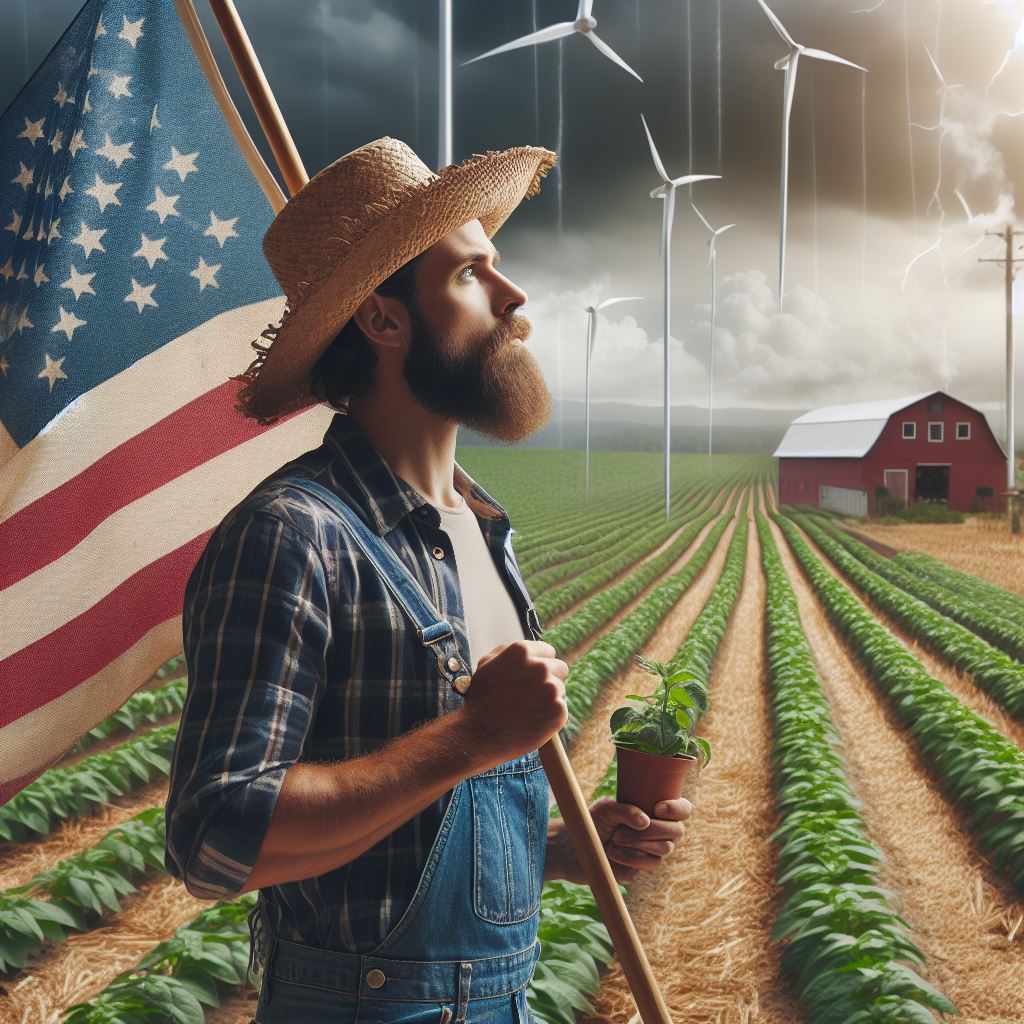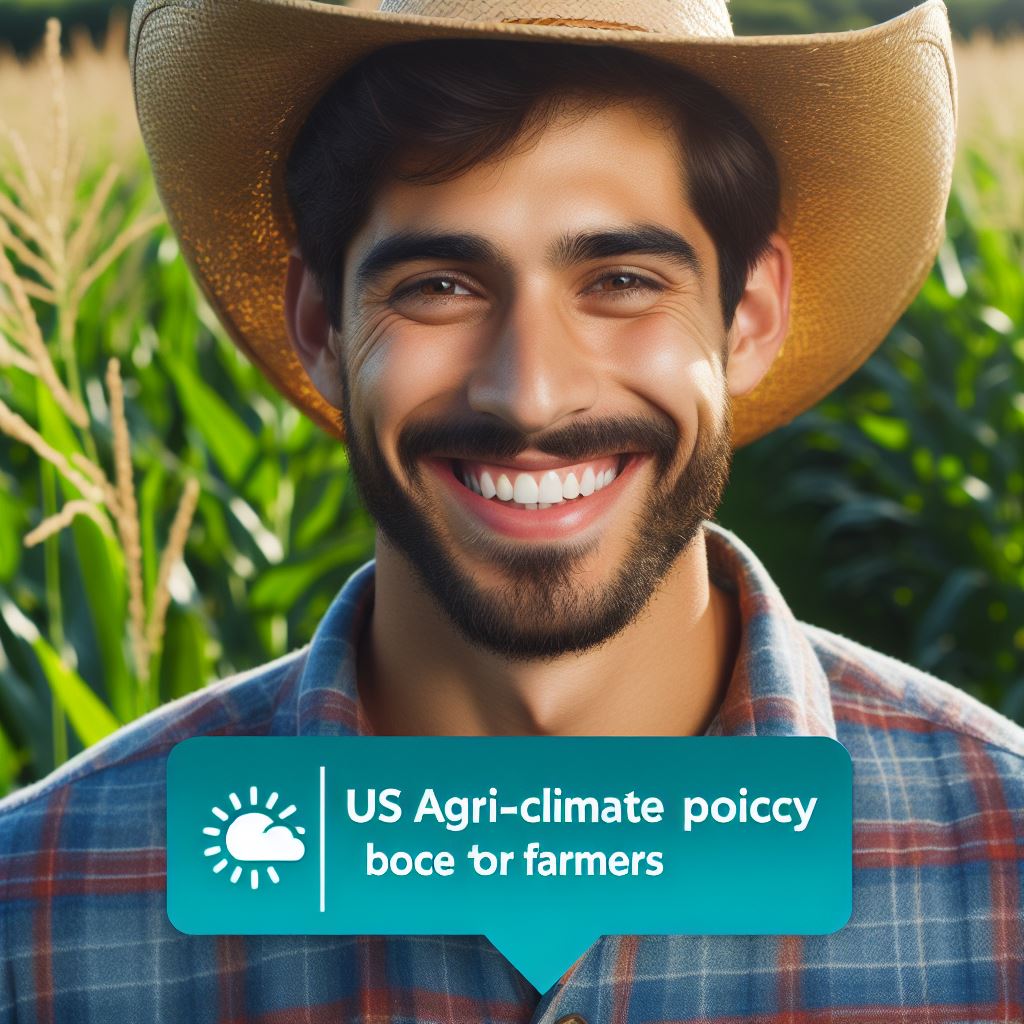Introduction
Farm Policy vs Climate Change, US farm policy refers to the regulations and laws established by the government to govern agriculture practices in the country.
Brief explanation of US farm policy
US farm policy encompasses a wide range of measures aimed at supporting farmers, ensuring food security, and promoting sustainable agriculture.
Importance of addressing climate change in agriculture
Addressing climate change in agriculture is crucial to mitigate its detrimental impacts on food production, farmer livelihoods, and global food security.
Climate change poses significant challenges to agriculture, such as extreme weather events, changing rainfall patterns, and increased pest and disease outbreaks.
Farmers need support and incentives to adopt climate-smart practices, such as conservation agriculture, precision farming, and agroforestry.
US farm policy should focus on promoting resilient farming systems, enhancing soil health, and fostering agricultural innovation to adapt to climate change.
Investing in research and development of climate-resilient crop varieties and sustainable farming techniques is essential for long-term sustainability.
Policy interventions should encourage the adoption of renewable energy sources in agriculture, such as solar panels and wind turbines, to reduce greenhouse gas emissions.
Supporting farmers in implementing climate adaptation measures is crucial to maintaining their profitability and ensuring a stable food supply for the nation.
In general, addressing climate change in US farm policy is paramount for the sustainable future of agriculture, farmer livelihoods, and global food security.
US Farm Policy: Overview
US Farm Policy plays a crucial role in supporting and regulating agricultural practices in the country.
It consists of various components, including subsidies, crop insurance, and conservation programs.
These components aim to provide stability and financial support to farmers, ensuring the availability of affordable and abundant food supply for the American population.
Major components of US farm policy
1. Subsidies
Subsidies are a significant component of US Farm Policy.
They provide financial assistance to farmers, helping them overcome economic challenges and stabilize their incomes.
These subsidies are primarily aimed at supporting commodity crops like corn, soybeans, wheat, and cotton.
2. Crop insurance
Crop insurance is another vital aspect of US Farm Policy.
It helps farmers manage risks associated with weather events, pests, and diseases, ensuring they are protected against potential losses.
This insurance provides compensation to farmers if their crops are damaged or destroyed, safeguarding their livelihoods.
3. Conservation programs
US Farm Policy also emphasizes conservation programs that promote sustainable agricultural practices.
These programs incentivize farmers to adopt practices that protect the environment, such as soil conservation, water management, and wildlife habitat preservation.
By encouraging conservation, these programs contribute towards combating climate change and promoting biodiversity.
Historical context of farm policy in relation to climate change
The historical context of US Farm Policy reveals a growing recognition of the intersection between agricultural practices and climate change.
Over the years, policymakers have acknowledged the need to address environmental concerns within farm policy frameworks.
Transform Your Agribusiness
Unlock your farm's potential with expert advice tailored to your needs. Get actionable steps that drive real results.
Get StartedIn the past, traditional farm policy primarily focused on production and income support for farmers.
However, with increasing awareness of climate change impacts, there has been a shift towards incorporating environmentally sustainable practices within farm policy.
Recognizing the role of agriculture in greenhouse gas emissions, newer farm policies have incorporated strategies to mitigate climate change.
These strategies include promoting renewable energy production, enhancing soil health through conservation practices, and supporting research on climate-resilient crops.
Furthermore, there is a greater emphasis on conservation programs that aim to minimize the environmental impacts of agricultural activities.
These programs incentivize farmers to adopt practices that reduce soil erosion, improve water quality, and sequester carbon in the soil.
This integration of conservation and climate change measures within US Farm Policy highlights a progressive approach towards addressing environmental challenges while supporting agricultural productivity.
By incentivizing sustainable practices, the policy seeks to create a win-win situation where farmers can improve their profitability while minimizing their environmental footprint.
In a nutshell, US Farm Policy encompasses various components, such as subsidies, crop insurance, and conservation programs, to support and regulate agriculture in the country.
Over time, there has been a historical evolution, with policymakers recognizing the importance of incorporating climate change considerations within farm policy frameworks.
This shift towards sustainability reflects a proactive response to address environmental concerns while ensuring the long-term viability of the agricultural sector.
Read: Crops & Floods: Navigating the Risks
Impacts of Climate Change on US Agriculture
Overview of the effects of climate change on farming practices
- Rising temperatures and changing precipitation patterns have significant implications for US agriculture.
- Increased temperatures can lead to heat stress in crops and livestock, reducing productivity.
- Changes in rainfall patterns can cause droughts or floods, posing challenges for irrigation and water management.
- Altered growing seasons and increased frequency of extreme weather events disrupt farming schedules and crop growth.
Examples of how extreme weather events disrupt agricultural production
- Severe storms and hurricanes can damage crops, infrastructure, and farm equipment.
- Heatwaves can lead to crop losses and reduce yield quality.
- Droughts reduce water availability for irrigation, stunting crop growth and limiting yields.
- Flooding events can wash away topsoil and nutrients, affecting soil fertility and crop health.
Long-term implications for farmers and food security
- Climate change poses risks to farmers’ incomes and livelihoods, particularly those dependent on agriculture.
- Reduced crop yields and livestock losses due to extreme weather events can lead to financial distress.
- Changing growing conditions may require farmers to adapt by switching to more resilient crop varieties.
- Increased vulnerability in agricultural systems can challenge food security, leading to potential price hikes and shortages.
- Farmers may face higher costs for adapting to climate change, such as investing in irrigation systems or climate-resilient infrastructure.
In summary, climate change has a profound impact on US agriculture.
From altering farming practices to disrupting agricultural production, extreme weather events and changing climatic conditions pose challenges for farmers and food security.
It is crucial for policymakers and farmers to prioritize climate change adaptation strategies to ensure the resilience and sustainability of the US agricultural sector in the face of climate change.
Read: Changing Seasons, Changing Harvests: US Focus
Historical Perspective on Climate Change in US Farm Policy
Past farm policies in the US have not adequately recognized the impact of climate change. Initial focus of farm policies was mainly on production, profitability, and food security.
Climate change was often considered a secondary concern, given less attention and priority. Limited understanding of climate science hindered the integration of climate change into farm policy.
Emphasis on short-term gains overshadowed the long-term consequences of climate change on agriculture. Historical farm policies lacked specific measures to address the challenges posed by climate change.
Brief Analysis of How Climate Change has been Addressed by Past Farm Policies
Previous farm policies primarily focused on providing subsidies and support for farmers’ income stability.
Minimal consideration was given to building resilience against climate-related risks and impacts.
Limited funding was allocated for research and development of climate-smart agricultural practices.
Insurance programs did not comprehensively account for climate change-induced natural disasters.
Historically, farm policies have not effectively incentivized farmers to adopt sustainable farming techniques.
Evaluation of the Effectiveness of Previous Measures
Previous farm policies failed to prevent agriculture’s vulnerability to climate change. Lack of explicit climate change adaptation strategies resulted in significant agricultural losses.
Insufficient support inhibited farmers from implementing climate-resilient practices.
Inadequate risk management tools contributed to the economic instability of farmers. Farm policies did not align with the urgency of addressing climate change and its impact on agriculture.
Challenges Faced in Integrating Climate Change into Farm Policy
Political and ideological differences pose challenges in formulating comprehensive climate-smart farm policies.
Uncertainty regarding future climate projections makes it difficult to develop effective adaptation strategies.
The complexity of integrating diverse agricultural systems and regional variations adds implementation barriers.
Resistance from the agricultural industry due to concerns about potential economic burdens.
Coordination among government agencies, stakeholders, and farmers is critical but often lacking.
Showcase Your Farming Business
Publish your professional farming services profile on our blog for a one-time fee of $200 and reach a dedicated audience of farmers and agribusiness owners.
Publish Your ProfileEducation and outreach programs are necessary to raise awareness and support for climate change initiatives.
Generally, historical US farm policies have not adequately addressed climate change.
The focus on short-term goals and lack of understanding hindered the integration of climate change considerations into farm policies.
Previous measures were insufficient in providing resilience, support, and incentives for farmers to adopt climate-smart practices.
Challenges such as political differences, uncertainty, and industry resistance complicate the incorporation of climate change into future farm policies.
To effectively tackle climate change in agriculture, comprehensive strategies and collective efforts are needed to ensure the long-term sustainability and resilience of the farming sector.
Read: Cold Snaps & Citrus: A New Era for Florida Farms

Current Initiatives Linking US Farm Policy and Climate Change
In recent years, there have been several programs and initiatives aimed at addressing the link between US farm policy and climate change.
These efforts recognize the importance of sustainable agricultural practices in mitigating greenhouse gas emissions and adapting to the impacts of climate change.
Here, we will provide an overview of some of the recent programs and initiatives, analyze their goals, outcomes, and challenges, and examine efforts to promote sustainable agricultural practices.
Overview of Recent Programs or Initiatives
- USDA’s Climate Hubs: Established in 2014, the USDA’s Climate Hubs provide regional science-based information and support to farmers, ranchers, and forest landowners.
- Conservation Stewardship Program (CSP): The CSP, administered by the Natural Resources Conservation Service, offers financial and technical assistance to promote conservation practices on agricultural lands.
- Agricultural Conservation Easement Program (ACEP): ACEP encourages farmers, ranchers, and private landowners to protect critical agricultural lands and wetlands, reducing the conversion of these areas to non-agricultural uses.
- Soil Health Initiative: The Soil Health Initiative aims to improve soil quality and carbon sequestration on agricultural lands through practices like cover cropping and reduced tillage.
Analysis of Goals, Outcomes, and Challenges
These initiatives have set ambitious goals such as reducing greenhouse gas emissions, increasing carbon sequestration, and promoting resilient agricultural systems.
The outcomes, however, vary depending on factors such as adoption rates and the effectiveness of implemented practices.
While some farmers have successfully adopted sustainable practices, others face challenges including financial constraints, lack of technical knowledge, and resistance to change.
Overcoming these challenges requires targeted support, education, and financial incentives to encourage widespread adoption.
Efforts to Promote Sustainable Agricultural Practices
- Crop Rotation and Diversification: Encouraging farmers to rotate crops and diversify their agricultural systems can improve soil health, reduce pests, and enhance resilience against climate impacts.
- Reduced Chemical Inputs: Minimizing the use of synthetic fertilizers and pesticides reduces environmental pollution and promotes healthier ecosystems.
- Precision Agriculture Technologies: Adoption of precision agriculture technologies, such as GPS-guided equipment and remote sensing, allows farmers to optimize resource use and reduce emissions.
- Agroforestry Systems: Integrating trees into agricultural landscapes facilitates carbon sequestration, provides additional income streams, and enhances overall ecosystem health.
Promoting sustainable agricultural practices requires a holistic approach that acknowledges the social, economic, and environmental dimensions of farming.
Collaboration among farmers, researchers, policymakers, and other stakeholders is crucial to develop and implement effective strategies.
Additionally, long-term funding commitments and incentives are essential to support farmers in transitioning to sustainable practices and to ensure the long-term success of these initiatives.
In fact, the recent programs and initiatives linking US farm policy and climate change highlight the urgent need to address the environmental impacts of agriculture.
While progress has been made, significant challenges remain.
By continuing to invest in research, education, and financial support, the United States can play a leading role in adopting sustainable agricultural practices that mitigate climate change and build more resilient food systems for future generations.
Read: Climate Smart Farming: What’s New?
Potential Future Directions and Policy Solutions
In order to better address climate change in farm policy, it is essential to explore potential policy approaches.
These approaches should consider the benefits and drawbacks of different strategies while also taking into consideration the role of scientific research and innovation in shaping future policy.
Exploration of possible policy approaches to better address climate change in
One potential policy approach to address climate change in farm policy is the implementation of sustainable agricultural practices.
These practices focus on reducing greenhouse gas emissions, improving soil health, and promoting water conservation.
By encouraging farmers to adopt sustainable methods, the agricultural sector can significantly contribute to mitigating climate change.
Another policy strategy is to provide financial incentives for farmers who adopt climate-friendly practices. These incentives can take the form of subsidies, tax breaks, or grants.
By rewarding farmers for implementing environmentally friendly practices, this approach can lead to increased adoption of sustainable farming methods.
Furthermore, policy solutions should also consider the importance of supporting research and innovation in the agricultural sector.
Investing in scientific research can lead to the development of new technologies and practices that can help farmers adapt to the challenges posed by climate change.
This can include the development of drought-resistant crops, advanced irrigation techniques, and precision farming technologies.
Potential benefits and drawbacks of different strategies
However, it is important to acknowledge the potential drawbacks of certain policy approaches.
For example, the use of financial incentives may be seen as favoring larger, wealthier farms that can afford to invest in sustainable practices.
This can lead to the consolidation of the agricultural sector and further marginalization of smaller, family-owned farms.
Consideration of the role of scientific research and innovation in shaping future policy
Additionally, the implementation of certain policies may face resistance from farmers who are reluctant to change their traditional farming practices.
Therefore, policy solutions should include education and outreach programs to help farmers understand the benefits of adopting sustainable methods and provide them with the necessary support and resources to make the transition.
In short, addressing climate change in farm policy requires exploring potential policy approaches, understanding their benefits and drawbacks, and considering the role of scientific research and innovation.
By encouraging sustainable agricultural practices, providing financial incentives, and supporting research, we can create a more resilient and climate-friendly agricultural sector.
Conclusion
It is imperative to address climate change in US farm policy for several reasons.
First, the agricultural sector is heavily impacted by climate change, leading to decreased crop yields and increased pest and disease pressure.
Furthermore, climate change poses a threat to food security and global stability, highlighting the need for sustainable agricultural practices.
By integrating climate change mitigation and adaptation strategies into farm policy, we can foster resilience and mitigate the negative impacts on farmers and consumers.
Therefore, policymakers, farmers, and consumers must work collaboratively to tackle the challenges brought upon by climate change.
This requires a concerted effort in implementing climate-smart agricultural practices, investing in research and technological innovations, and providing support to farmers in transitioning to sustainable farming methods.
In addition, consumers play a crucial role by making conscious choices that promote sustainable agriculture, such as buying locally sourced and organic products.
By demanding sustainable practices, consumers can drive market forces towards environmentally friendly farming methods.
Addressing climate change in US farm policy is not only an environmental imperative but also an economic opportunity.
By embracing sustainable practices, the agricultural sector can diversify its income streams, reduce dependence on external inputs, and create jobs in renewable energy and conservation.
Recognizing the importance of addressing climate change in US farm policy is the first step towards securing a sustainable future for agriculture.
It is time for policymakers, farmers, and consumers to join forces and take action to ensure the resilience and viability of our agricultural systems in the face of climate change.




